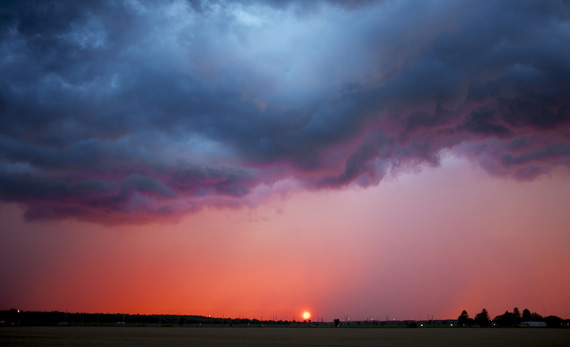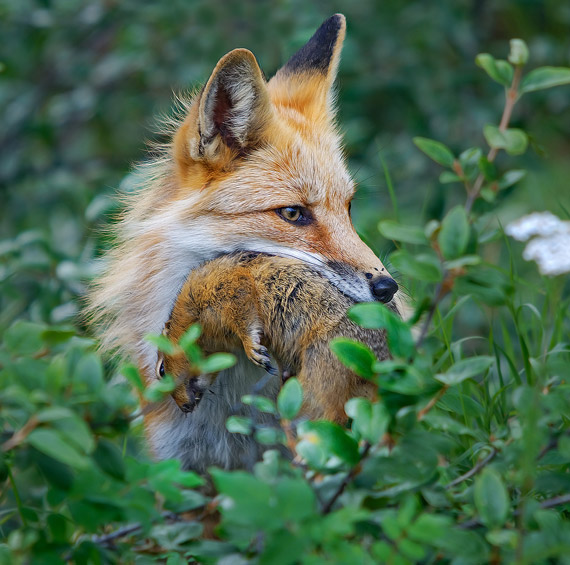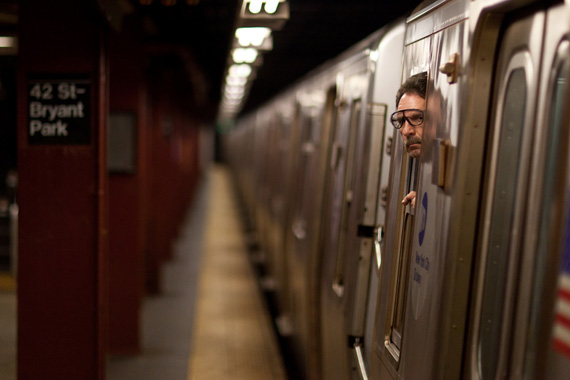Once you start taking photos, many things become clear. The first is that light is vital to creating a nice photograph. The second thing is that digital photography has made things much quicker and simpler. Third, we understand that proper camera usage is crucial to getting good quality photographs.

photo by Jamie McCaffrey
As soon as these three things meet, we can start to feel pleased with our images. Once we recognize that various subjects and distinctive scenes need different adjustments, we can then go ahead and take beautiful shots.
Shutter speed and aperture (f-stop) are the two main things we must concern ourselves when aiming for sharp pictures. Shutter speed is responsible for the amount of time that the shutter is open. Aperture is responsible for depth of field and the amount of light coming into the sensor. Once you start exploring this closely you will realize that there’s more to the shutter than letting light in.
What causes blurry images?
If you are photographing at night, for instance, and you choose a shutter speed that is too quick, your images will be very underexposed. The shutter simply closes too fast to let any decent amount of light in. Alternatively, if you choose a speed that is too slow, you may run the run the risk of over exposing your scene. At times, when our shutter is too slow we can create blurry motion. Blurring the motion is good for intentional special effects, but it’s not good when you want tack sharp pictures.

photo by Keith Williams
Shutter speed is one of the main factors for image clarity. An unintentional blurry photograph is often a result of hand holding the DSLR when the shutter is slow. It is really difficult to take a photo with a slow shutter speed and get absolute sharpness. You can have the best intentions in the world yet still manage to blur the shot just by standing there.
How slow can you go?
So what is the slowest shutter speed you can use when hand-holding the camera? In my professional experience, it lives anywhere between 1/80 and 1/ 50 of a second. I can quite confidently shoot at 1/80 of a second and see no blur. A number of people I know can shoot at 1/50 of a second and see no blur. Your neighbour or friend may be different from you and me. This won’t make it correct or wrong. It simply means there is a cutoff point that we can go past.
A useful way to develop the sharpness in your images, without a tripod, is to position your shutter speed at the same number as your focal length. If you are working with a 50mm lens then try not to shoot slower than 1/ 50 of a second. If you are shooting with a 200mm lens then try not to shoot less than 1/200 of a second. The further away your subject is the longer the focal length you will need. Longer the focal lengths require a faster shutter speed. This is due to the fact that the more you zoom in, the more the image shakes and moves in the frame. You will have to balance this out by choosing a faster shutter speed.

photo by Jens Schott Knudsen
The smallest motion can totally distort your image. This comes about simply from breathing or just standing. If you are shooting with a DSLR, you’ll be able to see what focal length you have by looking down the barrel of your lens. Around your lens is a sequence of numbers. If you have a 24 to 105mm lens, you will see a succession of numbers ranging from 24 right through to 105. As you zoom closer into your scene you will see a little indicator next to the number. For example, if you see this small indicator pointing to the number 85 then you understand that you are working at 85mm. Matching the shutter speed and focal length numeric value is a good way to increase image clarity. However, there is a limit.
You cannot use this rule for very slow shutter speeds unless you use a tripod. For example, if you are photographing a landscape scene at 20mm then I can promise that setting your shutter speed to 1/20 of a second will not advance your clarity. You need to be sensible about how slow you go with your shutter speed before you need the help of your tripod.
Matching your shutter speed to your focal length to attain sharpness may not be observable right away. You will not be able to see a massive change for the better when you take a look at the shot on the LCD on the camera. Only when you get your photo into Photoshop or Lightroom will you observe the difference.
Once you zoom into your photo you will see variation in sharpness. Once you know how to achieve sharpness, you will not need to over sharpen your images in post-production.
About the Author:
Amy Renfrey writes for DigitalPhotographySuccess. She is a professional photographer and photography teacher. She shows you how to take the most breathtaking, brilliant and incredibly stunning photos every single time you press the shutter button, even if you know nothing about photography and have never used a digital camera before.
Like This Article?
Don't Miss The Next One!
Join over 100,000 photographers of all experience levels who receive our free photography tips and articles to stay current:






“I used to bull’s-eye womp rats in my T-16 back home. They’re not much bigger than two meters.” ~ Luke Skywalker
If your looking up the informational covered in this article you’re obviously just starting out and/or you don’t posses an abnormally high rate of a thousand midi-chlorians per cell of a Jedi master. Thus rendering the comments of record low handheld shutter speeds moot and rather misleading to the novice. These are great guidelines Amy and like anything else you’ve gotta learn to walk before you can run.
With a camera or lens that has image stabilization, and a little luck, you can get away with 1/20s or 1/30s, even at telephoto focal lengths.
This lets one achieve special effects when photographing moving water. The results are different from the “frozen” effects of high shutter speeds (e.g. 1/500s) or the blur effects of slow, tripod shots (e.g. 2s). Here is a recent example of mine:
https://www.flickr.com/photos/49304401@N00/47966106663/in/dateposted-public/
What if you are using a 200mm lens and you’re using a strobe? Can you go below 1/200 handheld then?
If it has a bulb moode, yyou can gow very slow.
I made pictures with 1 minute or more exposure time.
You can get light traces and nice blurry pitures or pictures like paintings.
It is a very interesting area.
Yor can rotate the camera durng exposure orf move it.
There are lots of possibilities.
Best regards
and best light
Bernd
Without 11 coffee or 6 beers, I can do easy, on my APS-C Sony mirorless, with any OSS or stabiliser, with the Sigma 30mm 1/15 sec and with my Sigma 60mm 1/25 sec. Nice and clear picture.
Could be because my camera is lighter or smaller then any Full Frame! ?
But my type of picture are mainly Street photography and some time it is not the primer importance to get a super sharp picture, but the timing; and portrait with my 60mm in ambiant light only ( a 90mm focal length equivalent in the 35mm format).
People just love rules – 2018 is the year when the word ‘rules’ in photography should be replaced by guidance – others have pointed out there are many variables.
Those of us who began life on film with settings limited by emulsion qualities have the advantage over the newest digital equipment. I, even now, use my Canon 6D MkII as if it were loaded with a specific film roll. I use the same (now inbuilt) metering, aperture and shutter settings that I would have used 60 years ago when I first discovered the magic of photography. It was then a Kodak “Autograph” bellows unit that I still possess and use occasionally, just for the fun of it. I also have, and use, a Russian/East German film camera that is sturdy beyond belief, but absolutely wonderful in the capture of stunning landscape memories.
Shooting 50mm on a crop sensor? Isn’t that actually 75mm? A better rule is to double it.
Thank you I got my answer. To keep the speed above or on the focal length is easy to remember. :-)
I have successfully tried 1/8 sec. at f/2.8 with the Sony 16-50mm f/2.8 lens fitted to a Sony Alpha 560 DSLR with good results. One advantage I noticed here : The camera + lens weigh >1 kg and give stability
meaning, the heavier the equipment, the better are your chances for getting a sharp image at slow shutter speeds.
Great article to help remind us. I shoot a lot at 200mm in less than desired lighting and I absolutely confirm to keeping the shutter to 200-250 as the slowest handheld.
Sometimes shutter priority is my best friend.
How slow you can go really depends on the camera and lens. Some image stabilisation systems work better than others.. Some cameras or lenses don’t have them. The amount of megapixels a camera has a direct relationship to this equation. A 16 M camera verse a 36 M with the same lens will give you a different speed.
The only reliable rule is to check and work it out. You need to take about ten images at each shutter speed, free standing and check your hit rate. To be reliable you want 7 or 8 sharp ones at the shutter speed.
Done politickin with the competition whats the word(yeah)
Put that on my moma, @, eight in the process
@ tryna tippy-toe through the process
tongue-tied when the truth is an object
whats the pros and cons of this next check
wasn’t nobody round I was independent
In the ’90s, sittin’ bum with the windows tinted
Heard a bum got a strap in the party
Who the f let this @ in the party?
Beat ’em up, beat ’em up, beat ’em up, beat ’em up (Ah)
I was seein’ double in the projects
Mad at myself when I put it to the side
Mama had to cater for the coupe
That we rode after school on the way to Popeyes
And @ wanna play both sides
It’s a red dot, don’t get on the wrong red eye
It’s a headshot, Damien Kane, Woo